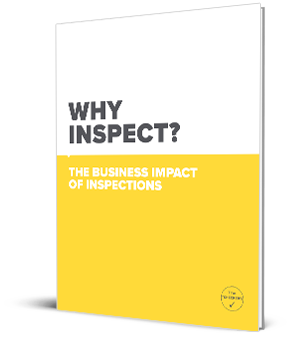Tips from a Coach, Not a Cop
You know that feeling when you're halfway through a toolbox talk and you're not even sure you're listening to yourself? We've all been there. Whether you're a crew lead trying to keep your team safe or a safety professional coaching from the sidelines, giving a great toolbox talk isn’t about ticking boxes; it’s about ensuring the message sticks.
At The Checker, we believe safety talks should do more than satisfy compliance; they should make people think, talk, and act a little safer every day. If you're looking to elevate your game, here are some tips to help you run toolbox talks that keep your team engaged and focused.
Start with why
People are more likely to engage when they understand the *reason* behind the message. Don’t jump right into the rules. Lead with a quick story, a real incident, or even a “what if” scenario. Make it relevant. If the talk is about working at heights, share an example (from your site or another) where a harness saved someone’s life or where one could’ve.
👉 People don’t remember rules. They remember why the rule matters.
Keep it short, but not rushed
You don’t need to drag it out. Five to ten minutes is usually the sweet spot. Long enough to say something that matters, short enough to avoid zoning out. But whatever you do, don’t rush through it like you’re reading the back of a cereal box. Deliver it like it matters because it does.
👉 Slow down. Breathe. Make eye contact.
Make it a two-way conversation
The best toolbox talks aren’t lectures, they’re discussions. Ask your crew questions like “Has anyone seen this go wrong on a job site?” or “What do you guys usually do when this happens?” or “Anyone got a shortcut they’ve used and did it backfire?” Even if it’s quiet at first, your team will pick up that you’re not just there to preach. You’re there to listen, too.
👉 People support what they help create.
Focus on one key message
Trying to cram five safety topics into one talk? Don’t. Toolbox talks are most effective when they’re laser-focused on one thing. Just like with inspections, focus and consistency are more important than coverage.
👉 One topic. One message. One takeaway.
Use real tools, not just words
If you’re referring to PPE, bring the necessary gear with you. If it's about equipment checks, show them where the failure points are. If it's a near-miss report, bring the diagram or photos. People remember what they see and touch way better than what they just hear.
👉 Use the space. Use your hands. Use real stuff.
Reinforce, don’t reprimand
Toolbox talks aren’t the time for public shaming. Yes, unsafe behaviour should be addressed, but the goal here is to build awareness and confidence, not fear. Reinforce the right actions, and your team will feel safer speaking up when something's off.
👉 A good talk fosters a safe culture. A bad one builds silence.
Prepare just enough
You don’t need to script every word. But do yourself (and your team) a favour: show up with a plan. Know your topic. Jot down the key point, a question to ask, and any examples you want to share. If you want a solid starting point, The Checker’s Safe Work Guides cover a wide range of topics and give you the basics to build a great talk around.
👉 Prepared = confident. And confident = effective.
One Last Tip: Keep it going
Toolbox talks aren’t a one-and-done. The most effective safety cultures are built on consistent, small conversations over time. Make it routine. Make it matter. And don’t be afraid to repeat yourself — you’re reinforcing, not nagging.
Looking for Toolbox Talk Topics? If you’re ever unsure about what to cover, or you want to ensure your team receives well-rounded reminders, check out The Checker’s Safe Work Guides. There’s a guide for just about everything, and they’re designed to be practical, accessible, and ready to use on the job.











